The DOE Sustainability Awards acknowledge, reward, and encourage achievements that advance exceptional sustainability practices at DOE sites and laboratories. We had four categories that sites could submit nominations for this year:
- Sustainability Champion
- Outstanding Sustainability Progras/Project
- Strategic Partnerships for Sustainability
- Innovative Approach to Sustainability
In addition, we presented lifetime achievement awards to two Sustainability Champions who are long-time DOE sustainability folks that dedicated significant amounts of time to making DOE sustainable. All of these efforts increased efficiencies, shared best practices, and improved overall performance. This year, we had ten winners and four honorable mentions. Congratulations to everyone involved in making these projects successful!
Lifetime Achievement awards recognize long-time DOE Sustainability Champions who have dedicated significant amounts of time to making DOE sustainable.

Teresa Perkins - Idaho Operations Office
Teresa has dedicated 19 years to improving the sustainability of DOE’s Idaho National Laboratory as the Director of the Environmental Support Division, and will be retiring at the end of this month. Teresa was an early advocate of DOE sustainability programs and has routinely provided input into the maturing efforts of DOE sustainability objectives, including serving as an integral member of the development team for current DOE Order 436.1, "Departmental Sustainability" and their Strategic Site Sustainability Plan. Teresa’s leadership and dedication has had a profound and lasting impact on the DOE sustainability efforts and is appreciated by those who have had the privilege of working with her.
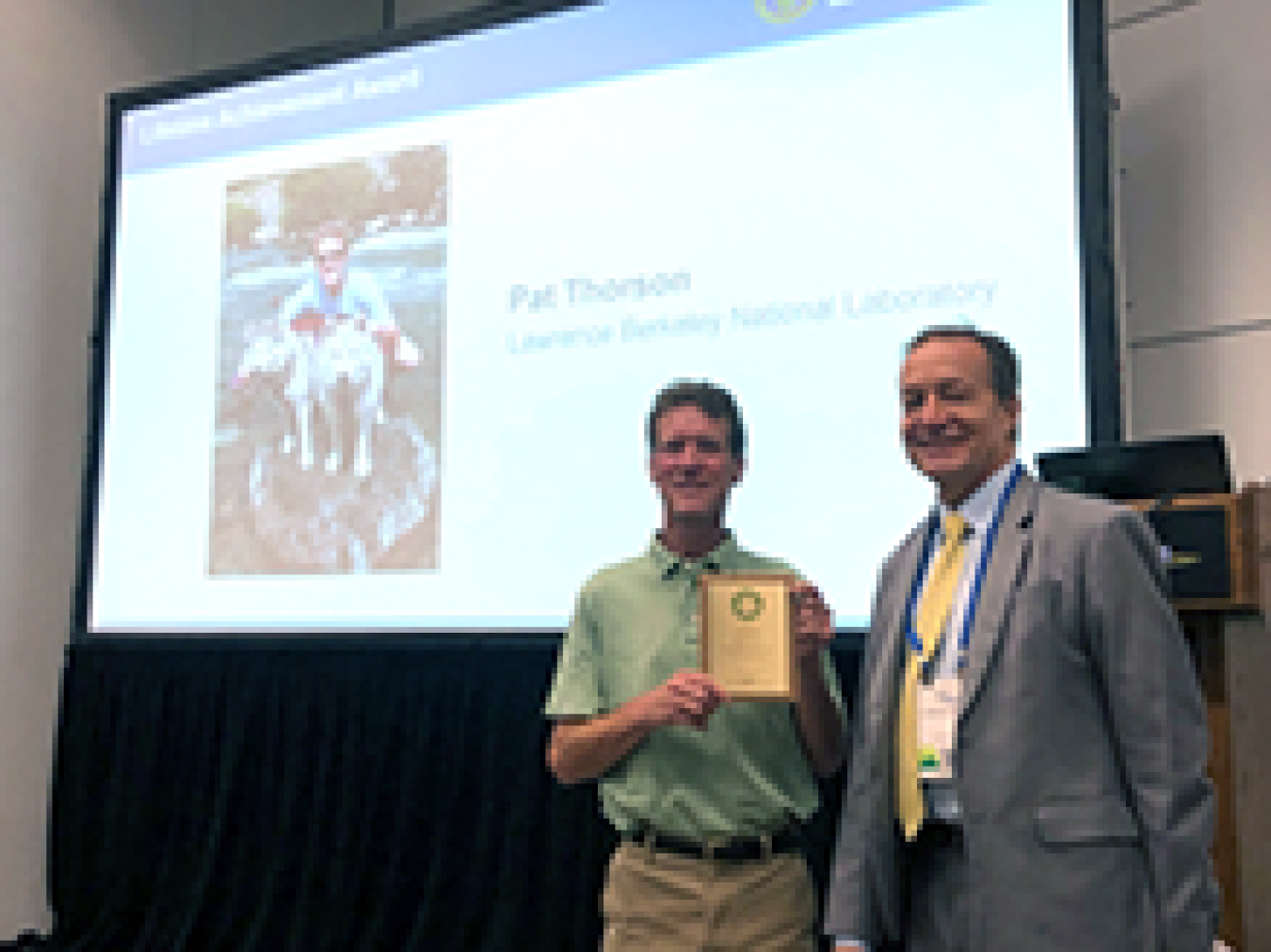
Pat Thorson - Lawrence Berkeley National Laboratory
Pat has been a strong and admired champion for sustainability at Lawrence Berkeley National Laboratory. Pat spent more than 27 years with the Environmental Services Group of the Environment, Health, & Safety Division. As program manager for the Environmental Management System, Pat integrated sustainability goals for energy, water, municipal solid waste, and fleet fuel use into the environmental action plans managed by the EMS. Pat successfully pushed the Sustainable Berkeley Lab initiative in critical annual or semi-annual management reviews of the EMS (and sustainability goals). This addition was well-received by upper management and has helped Sustainable Berkeley Lab in its efforts to become ISO 50,001 certified.
Sustainability Champions are individuals who make an effort to advance sustainability goals relating to sustainable buildings, water, waste, sustainable acquisition, etc.
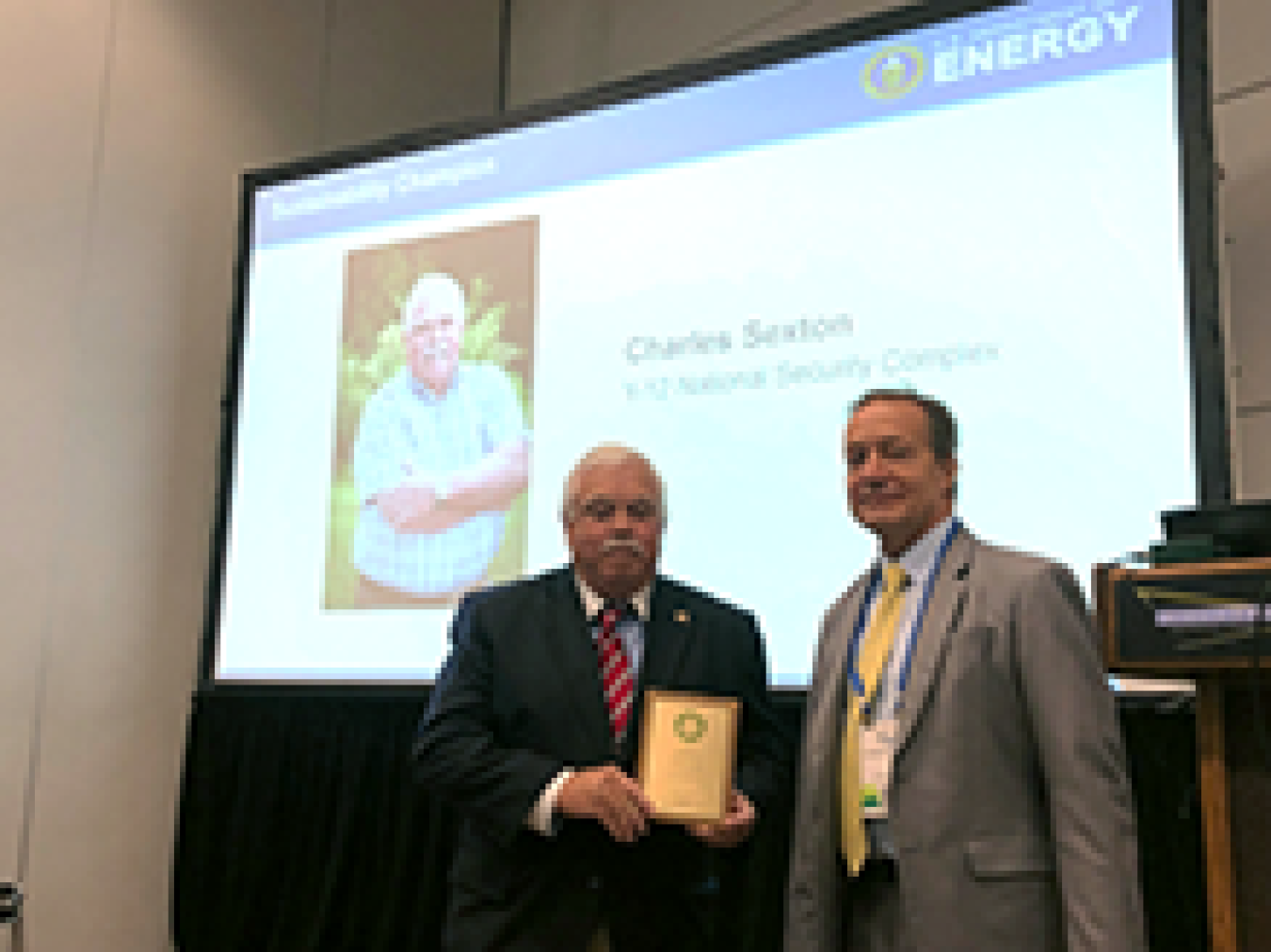
Charles Sexton - Y-12 National Security Complex
Charlie, Y-12 National Security Complex's Energy Manager, has been invaluable in facilitating relationships and ensuring accurate data management both within Consolidated Nuclear Security, LLC. (CNS), Y-12 and outside of the site, which has saved millions of dollars in energy and water savings for DOE and taxpayers. He built key relationships and coordinated efforts with various on-site facilities and their staff, contractors, outside utility providers, DOE, and the National Nuclear Security Administration (NNSA). He embraced this role as he knew it was vital to be able to track energy and water data, to ensure projects stayed on their projected energy usage rates, and to meet DOE Sustainability goals. All of Charlie’s efforts from building relationships to assessing facilities to implementing and tracking projects and initiatives to increasing awareness and education benefits for the environment through conservation of resources, ensures that Y-12 is more resilient today and will continue to grow in resilience.

Ricardo Marti-Arbona - Los Alamos National Laboratory
Throughout his time at Los Alamos National Laboratory (LANL), Ricardo has won multiple awards in relation to sustainable and efficient practices. Having implemented the In-House Liquid Nitrogen Plant the previous year, allowed LANL to implement a Liquid Nitrogen back-up system with no extra strain on resources or environmental impacts, while providing stability and security to the programs that depend of the long term Ultra Low Temperature freezers (ULT) for sample storage. Currently they have 2 other programs within the Associate Laboratory Directorate for Chemistry, Earth & Life Sciences (ALD-CELS) purchasing Sterling ULTs, so the impact is showing. During FY 2018, Ricardo’s motivation and commitment to creating a more sustainable laboratory space deemed him to be the buildings’ Green Champion. With huge efforts and support from Ricardo, the team was designated a Bronze certification from the My Green Lab organization, and became the first Green Lab in DOE.
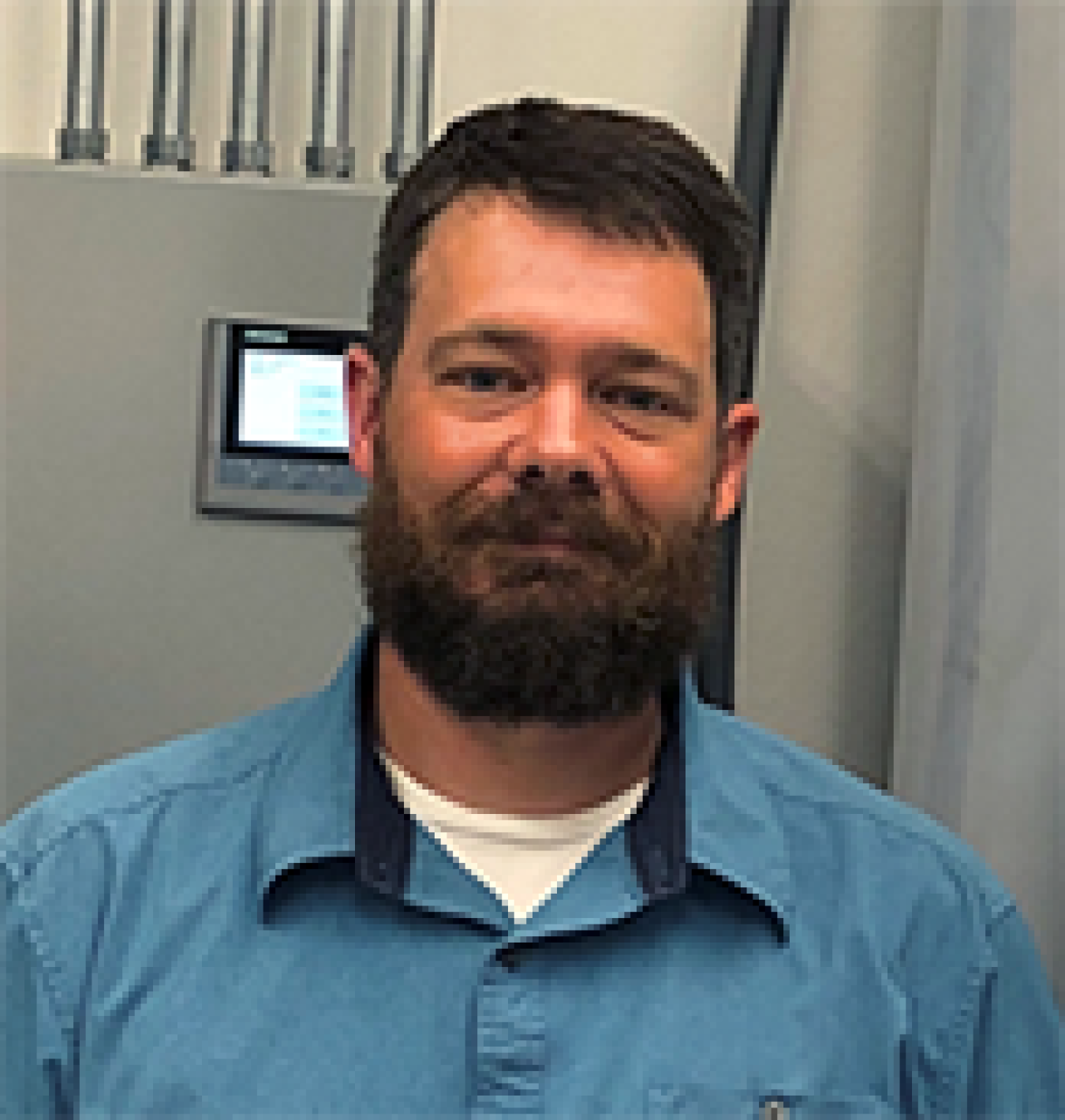
Will Kinman - Los Alamos National Laboratory (Honorable Mention)
Will has become an advocate for LANL's sustainability program during his time as technical project manager and he jumped into the world of operations and sustainability head-on. He transformed an empty, non-inhabitable building into a usable one that is no longer wasting energy. The electric and heat load from that building are now accomplishing their mission and giving much needed, additional space to researchers.
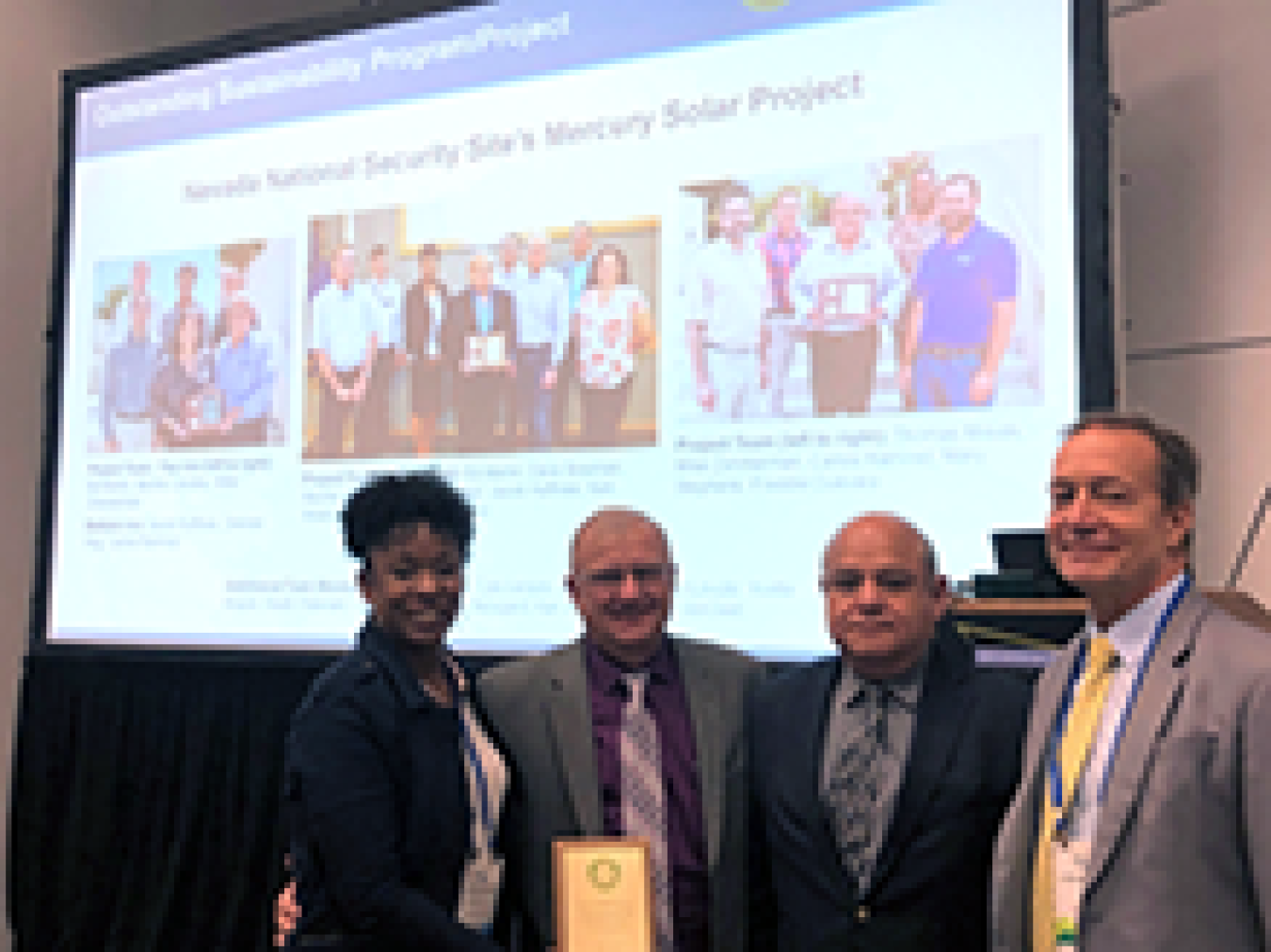
Nevada National Security Site’s Mercury Solar Project
Nevada National Security Site (NNSS) finished their Mercury Solar Project during FY 2018, marking the completion of their first net-zero-energy building. The Mercury Solar Project is their first grid-tied solar PV installation, and it supplies 424-kilowatts of distributed energy generation using solar PV, ground-mounted, fixed axis panels installed adjacent to their Fire Station in Mercury, Nevada. This investment provides an electricity savings of 773,800 kwh/yr and cost savings of approximately $50,000 annually by self-producing energy. Over the estimated 25 year life of the PV array, a savings of approximately $650,000 is expected to be realized. This project is a significant step in NNSS’ long-term modernization plan that places an emphasis on sustainable buildings.
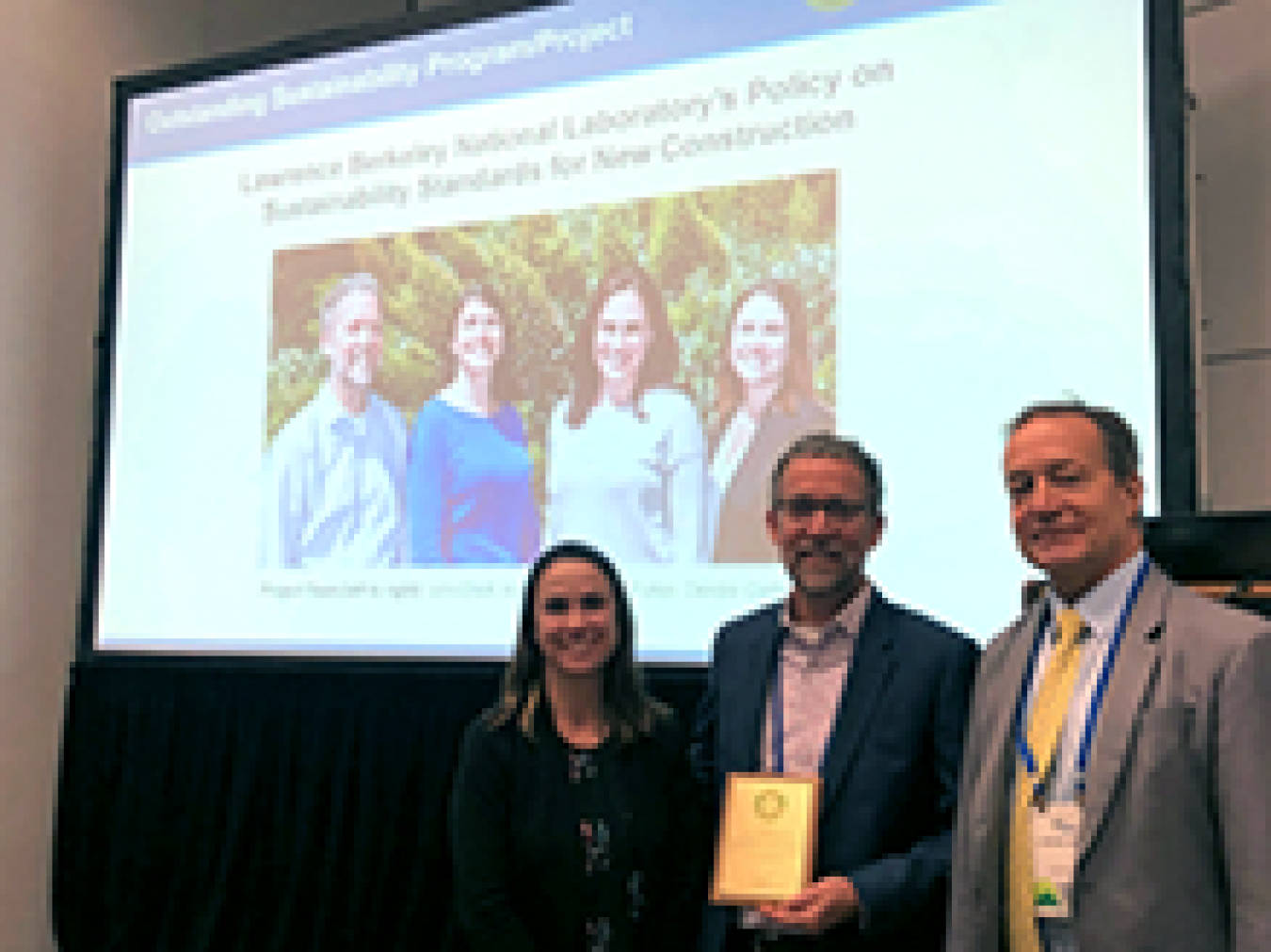
Lawrence Berkeley National Laboratory’s Policy on Sustainability Standards for New Construction
Lawrence Berkeley National Laboratory (Berkeley Lab) has developed local policy on Sustainability Standards for New Construction. The policy provides a vehicle to encourage integrated design, effectively meet Guiding Principles/LEED green building certification, and to bolster performance and sustainability for new construction. For instance, it drove the sustainability performance of a recently constructed 80,000 square foot all-electric laboratory building that utilizes only 28% of the energy that would have been used by previous facility. The policy is currently guiding the sustainable design of three other major new construction projects: a scientific facility upgrade, a new laboratory, and a cafeteria and event space.
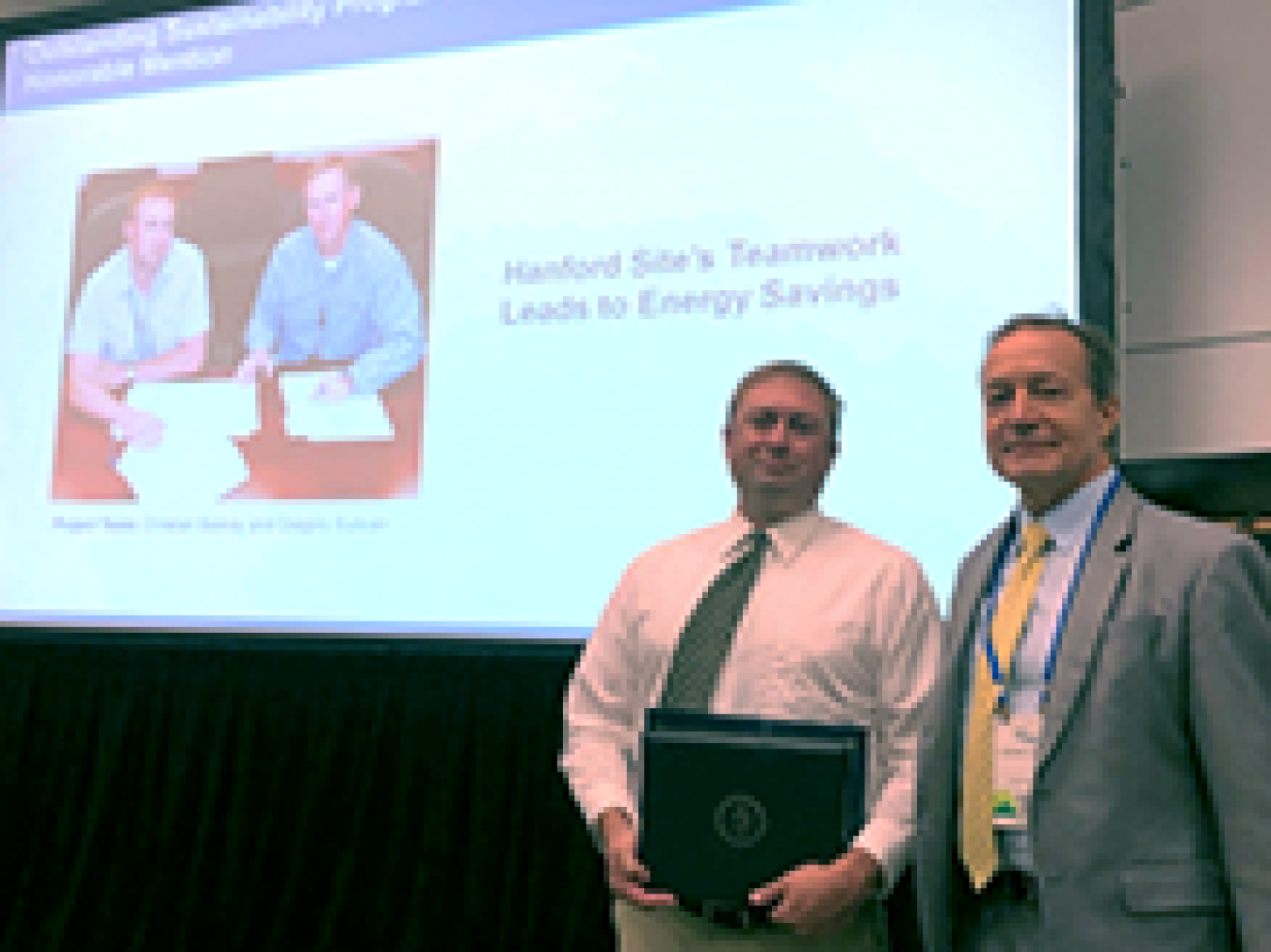
Hanford Site’s Teamwork Leads to Energy Savings (Honorable Mention)
Through Christian Seavoy and Greg Sullivan’s tireless efforts and Bonneville Power Administration's (BPA) Incentive Program, the Hanford Site contractors received over $279,000 in energy incentives in FY 2018 that could then be reinvested into additional energy efficiency projects. This saved a total of 1,216,600 kWh of energy, enough to power 111 homes in the United States, and reduced greenhouse gas emissions by 467 MTCO2e, equivalent to removing 99 cars from the road!
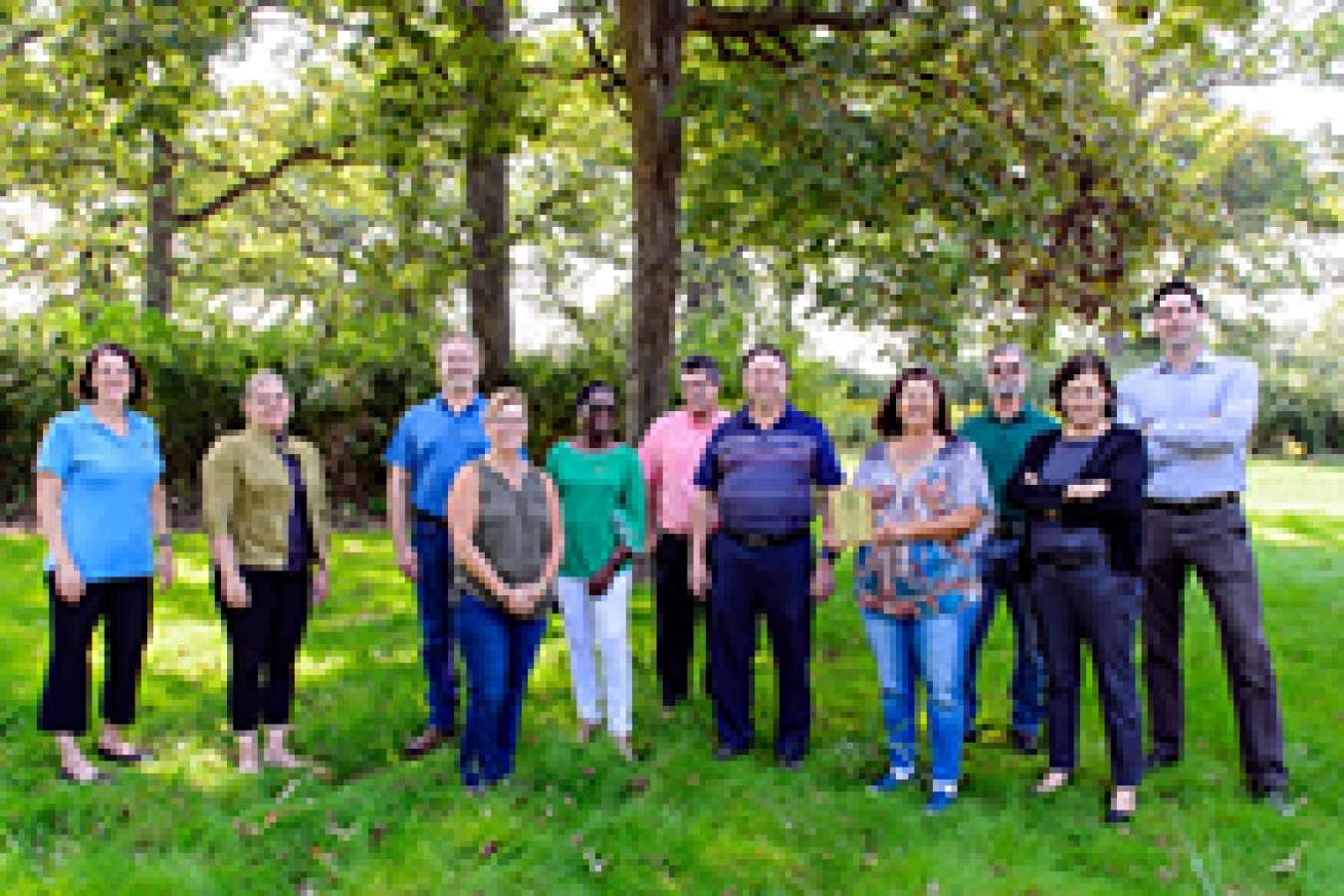
Argonne National Laboratory’s Composting Program
In 2015, Argonne National Laboratory completed a waste characterization of the solid waste produced by the Laboratory and found over 40% of all solid waste material to be compostable. The Sustainability Team created a partnership with Building Management, Custodial Services, Amenities Group and Sodexo, Argonne’s food service contractor, to develop a composting implementation plan in 2017 to divert food scraps and paper towels. Thanks to the strong and strategic partnerships, Argonne successfully launched their composting program on July 16, 2018, and established a robust program that is expected to increase their municipal solid waste diversion by 24%.
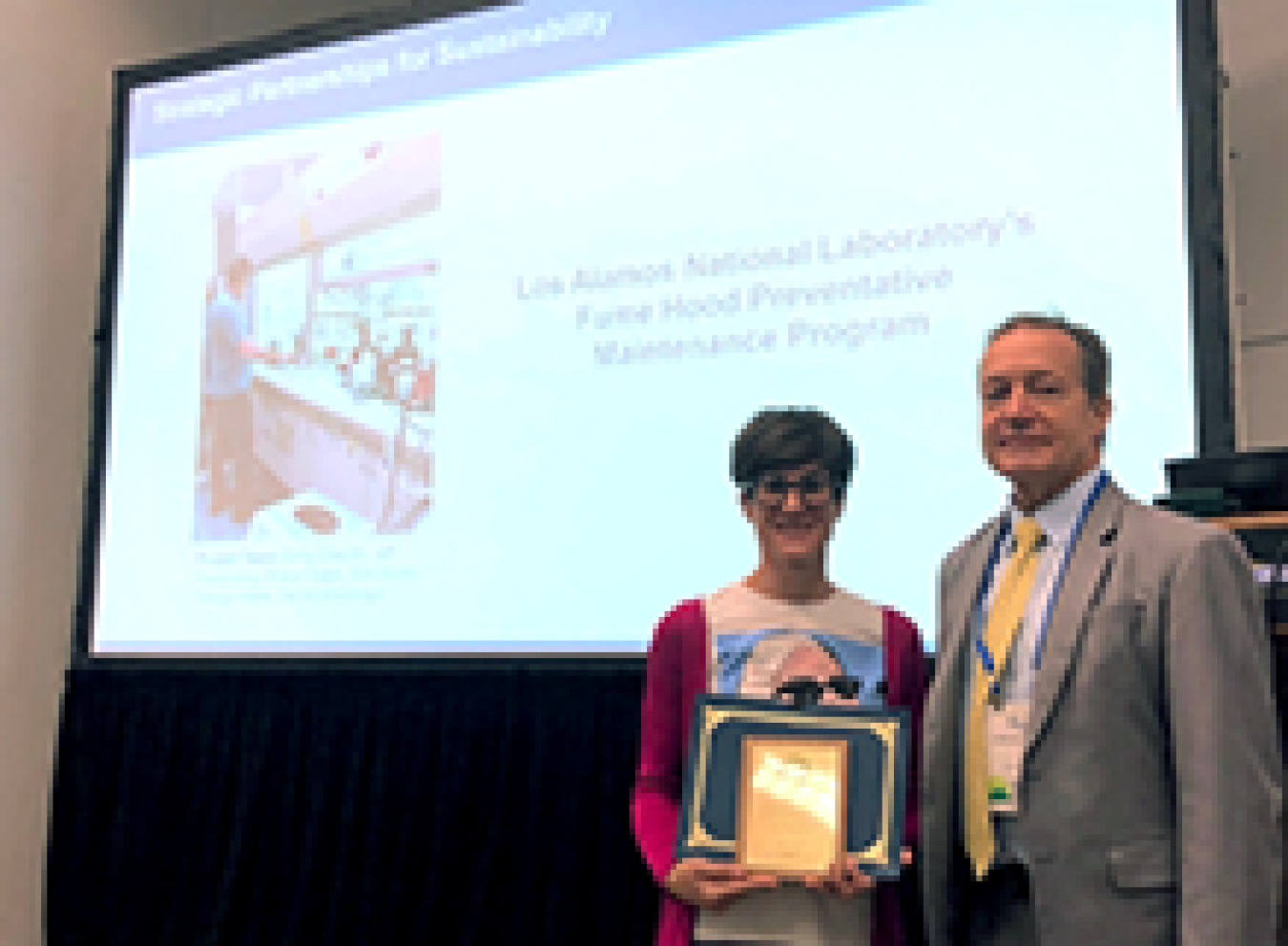
Los Alamos National Laboratory's Fume Hood Preventative Maintenance Program
Los Alamos National Laboratory's (LANL) Fume Hood team consists of craft, maintenance, sheet metal and pipe fitters, commissioning, building automation systems (BAS), IH, the laboratory ventilation management coordinator, the programs, and sustainability personnel. The team has worked through many challenges and has made great progress to reduce fume hood down time, make laboratory spaces safer, and reduce facility energy use. Overall, the program will save an impressive 144,000 kWh/yr. With this team being in the facilities, they are able to collaborate more with their researchers, leading to integration of sustainability during the project design phase for any new laboratories.
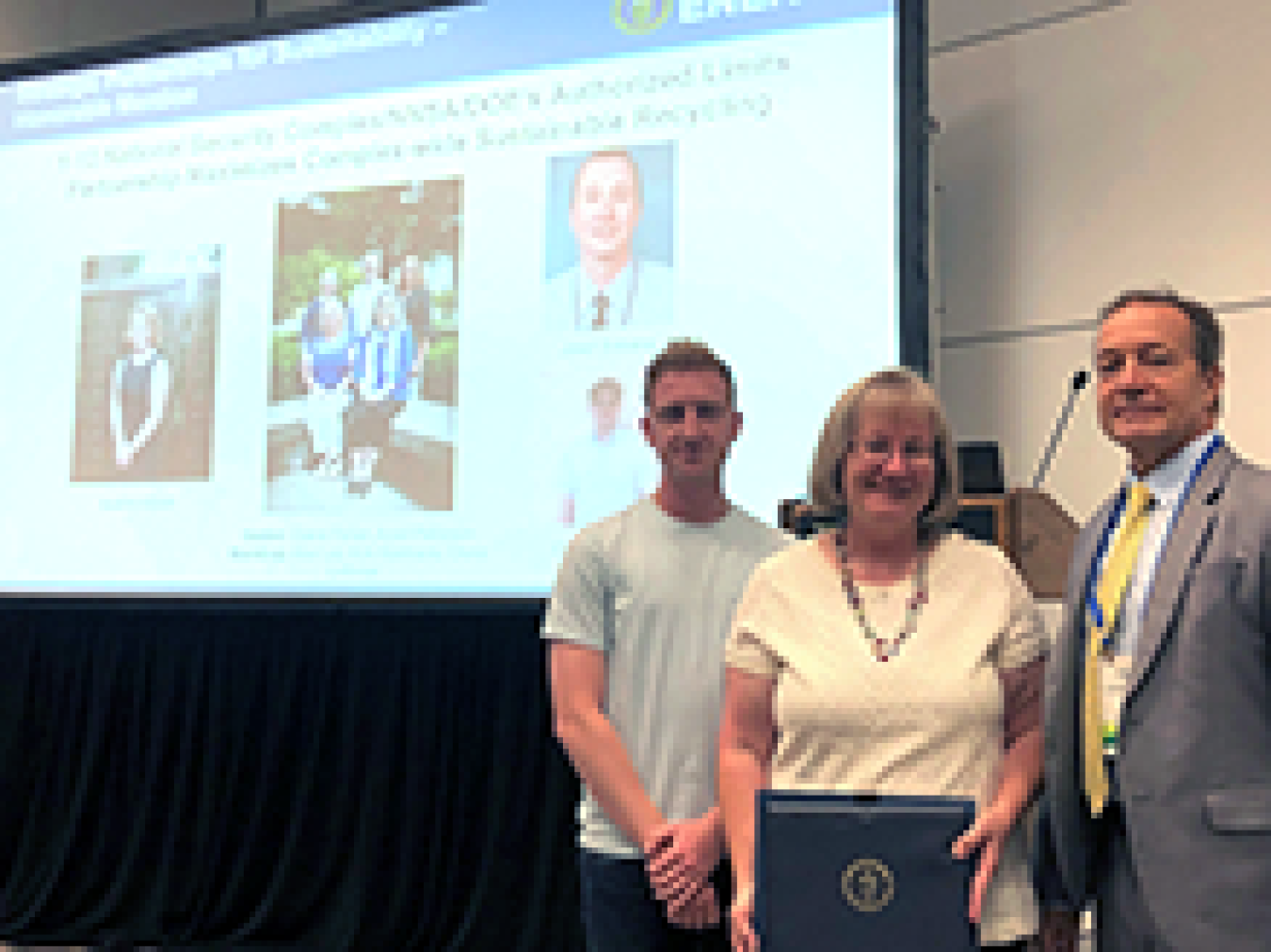
Y-12 National Security Complex/NNSA/DOE's Authorized Limits Partnership Maximizes Complex-wide Sustainable Recycling (Honorable Mention)
By partnering with the NNSA, the NNSA Production Office (NPO), and DOE, Y-12 personnel were able to work through the authorized release determination process for specific materials with potential volumetric radiological contamination in a simpler, more-straight forward manner than used in the past. This implemented initiative efficiently and safely reduces waste, improves operations, and avoids significant costs.
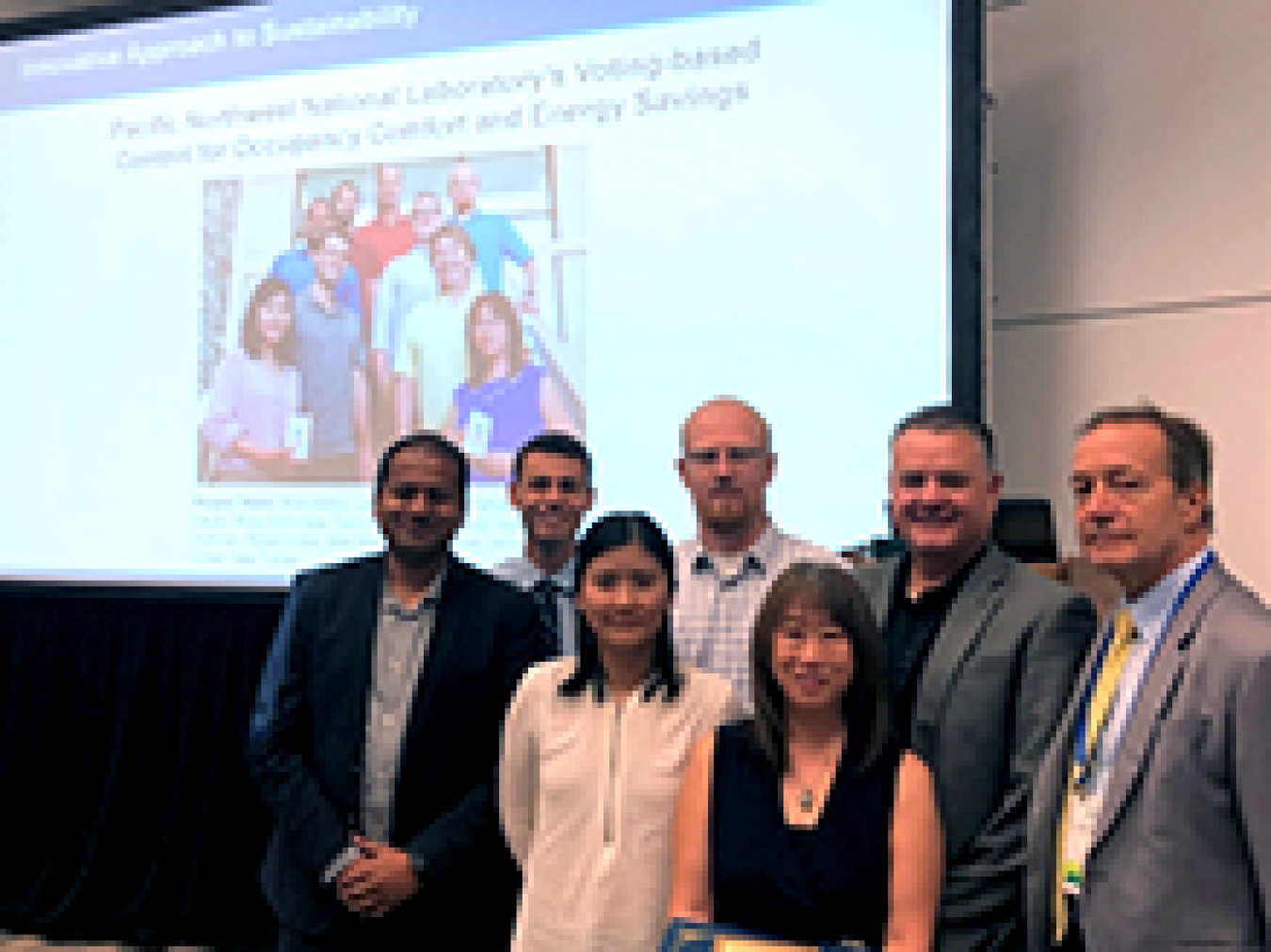
Pacific Northwest National Laboratory's Voting-based Controls for Occupancy Comfort & Energy Savings
The Pacific Northwest National Laboratory (PNNL) team installed wireless piezoelectric buttons in building/office locations to easily receive data about occupant comfort and requests to raise or lower the temperature. After 3 months, the pilot was extended to one year, and PNNL has saved more than 8,000 kWh (~5%) of electricity, more than 400 MMbtu (~34%) of natural gas, and approximately 70 tons in chilled water compared to the prior year. This innovative project represents a joint effort between their researchers and sustainability engineers using occupants’ feedback to make real-time thermal comfort adjustments and modify building operation set points for continuous work environment improvements.
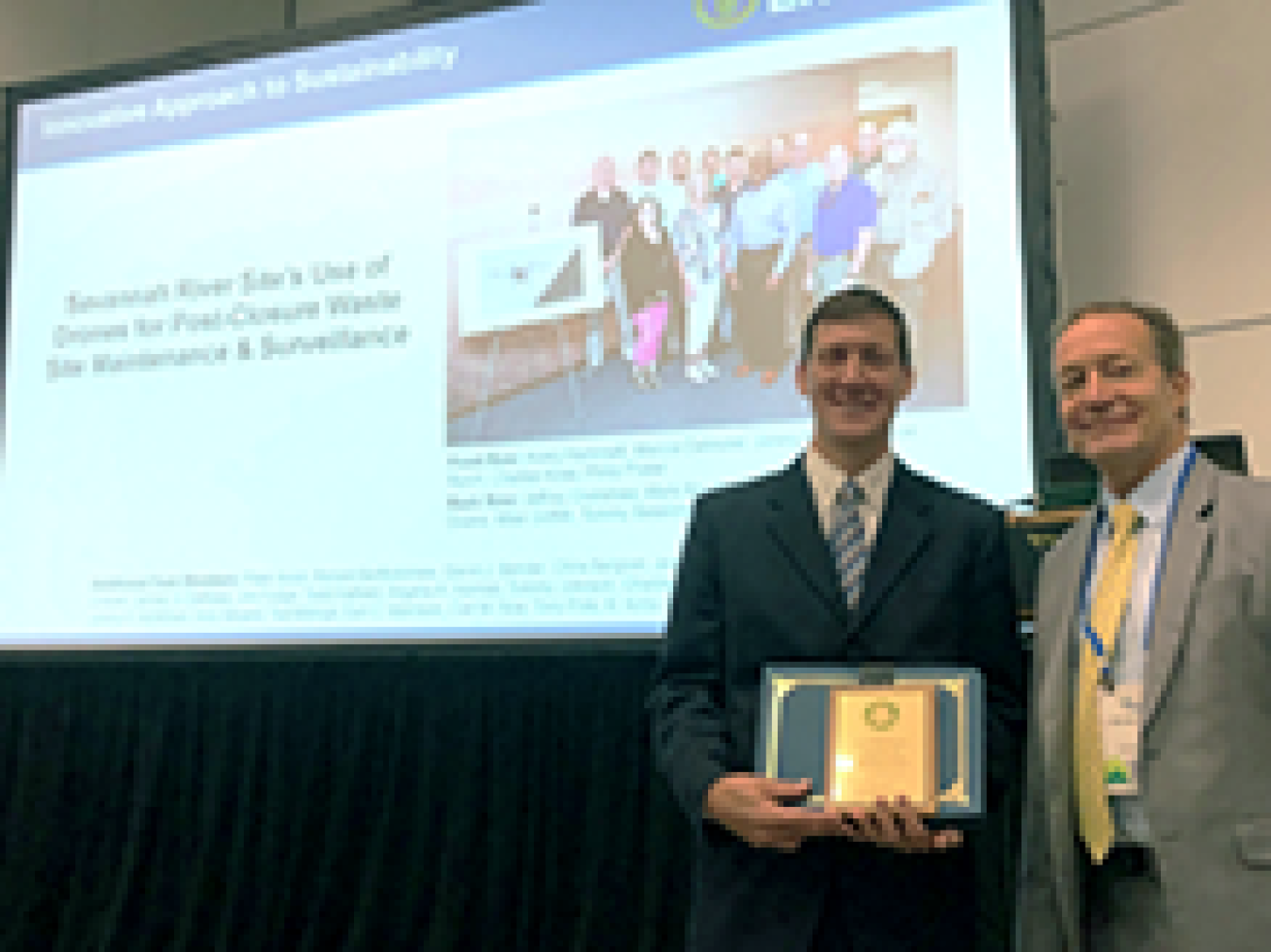
Savannah River Site's Use of Drones for Post-Closure Waste Site Maintenance & Surveillance
Savannah River Site (SRS) has an established Small Unmanned Aircraft System (sUAS) program to capture video of entombed reactor facilities to ensure long term integrity of the structures. This program allows for a much more thorough inspection than previously accomplished with traditional helicopters, at half the cost. Aerial inspection of the decommissioned reactor building using a sUAS is a cost effective option that allows for a quick inspection of the area, making them ideal for critical inspections while reducing emissions, noise and using no fossil fuels.
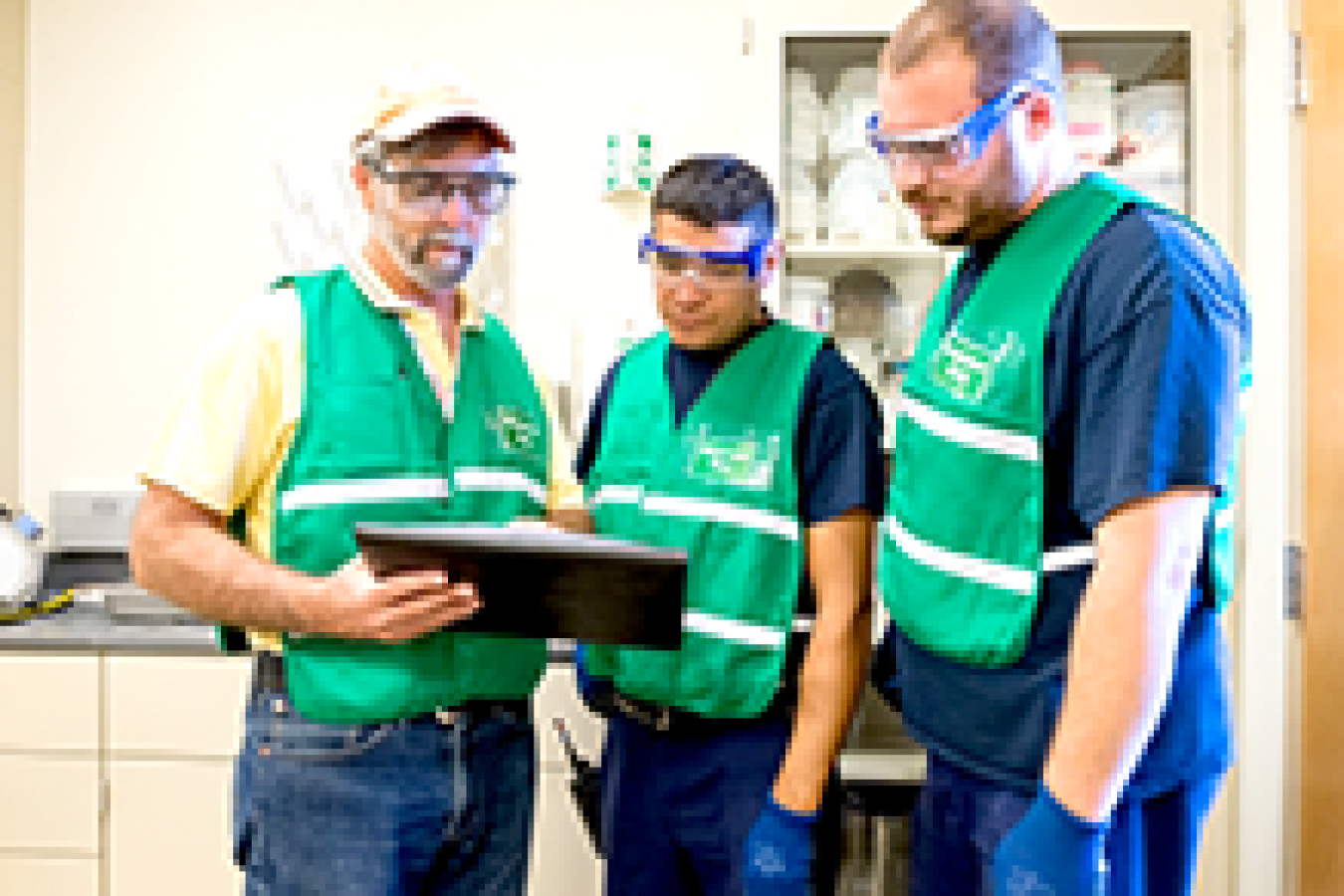
Argonne National Laboratory's Disposal Days (Honorable Mention)
Argonne National Laboratory's (ANL) lab-wide program provided comprehensive support to identify, prepare and pick-up non-hazardous and non-radiologically impacted equipment and materials located in offices, laboratories and common areas at no cost to the requestors. The ANL community came together to successfully reduce clutter and material stored in active work areas and common spaces, leading to safer, more efficient and environmentally responsible laboratory operations.
New HPC/Data Center Category for FY 2020 DOE Sustainability Awards
SPO has added a new category to the FY 2020 DOE Sustainability Awards! The HPC/Data Center Sustainability award will recognize a team or individual with a significant impact on sustainability efforts in high performance computing and data centers in FY 2019. Impacts may include energy or water savings, recycling or purchasing sustainable technical equipment, or initiatives to increase the resilience of a technical or scientific facility. Look out for the release of the new criteria in March 2020!

